Text

Chioma Ebinama, heroes hands necklace, 2023, gouache and watercolor on paper, 23 x 26 cm
123 notes
·
View notes
Text
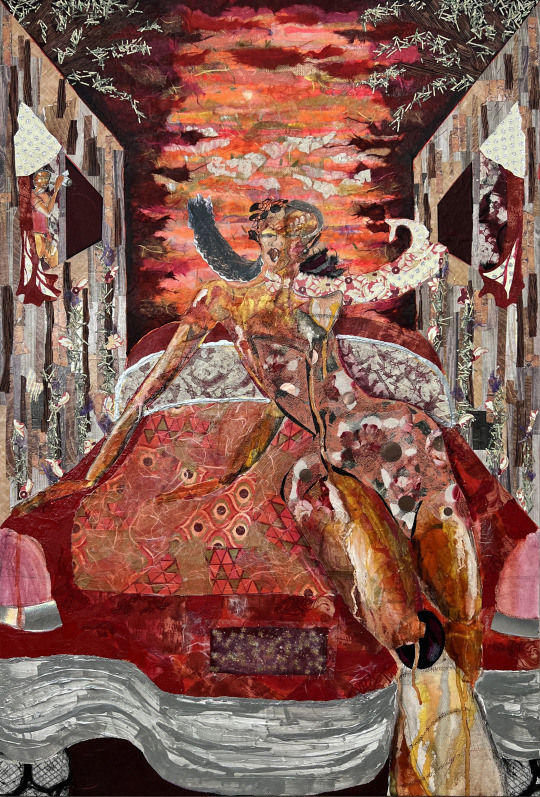
Audrey Lyall, The Voyeur, 24 x 36 Inches, Watercolor, oil pastel, acrylic, ink, collaged paper, gel pen, fabric, cotton thread, shredded money, fiber paste, sequins on canvas, 2023.
8 notes
·
View notes
Text

The Metropolitan Museum of Art acquires Horizontal (1973) by
Judith Bernstein
10 notes
·
View notes
Text
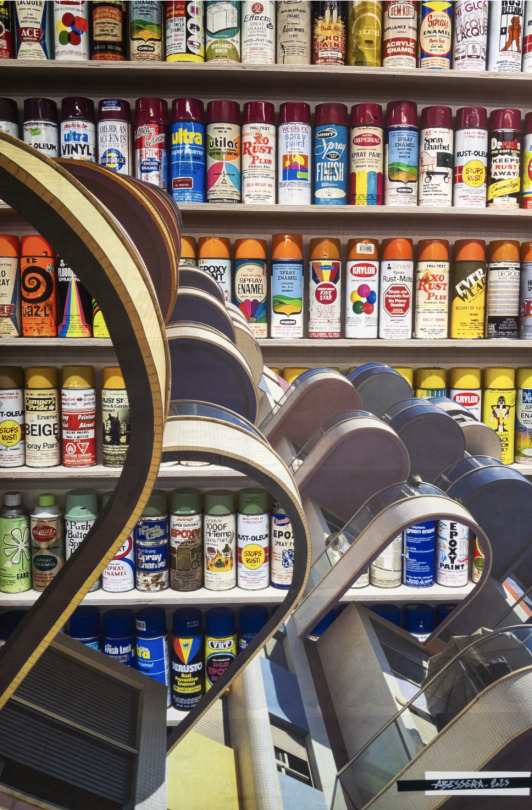
Sandrine Abessera Layers Of Memories, Color Spectrum, 2023
74 notes
·
View notes
Text
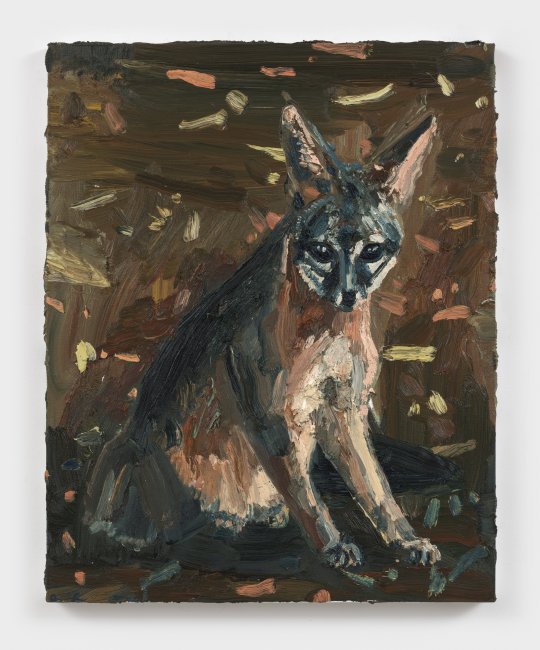
Allison Schulnik
Night Fox #3, 2021
Oil on canvas stretched over panel
9 notes
·
View notes
Text
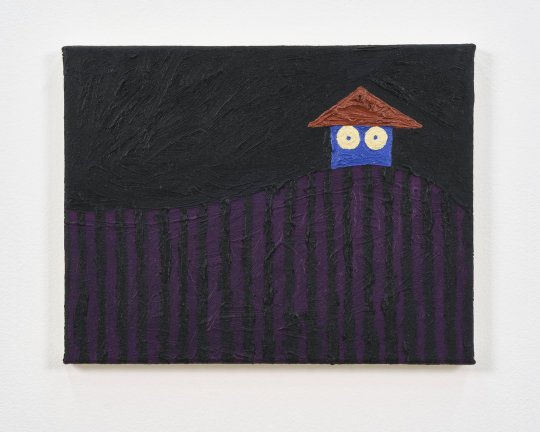
Alex Lemke
6 notes
·
View notes
Text



Finnegan Shannon
36 notes
·
View notes
Text

Olafur Eliasson
113 notes
·
View notes
Text

Sofia Stevi, Orange with two flies, 2022, ink and acrylic on cotton
17 notes
·
View notes
Text
Residency PeriodThe residency will begin May 22, 2023 and conclude on August 25, 2023.
Space & SupportThe artist-in-residence will have access to an office in a historic building across from Madison Square Park with a vibrant food and drink scene. The office will be available 24/7 and is close to the 6, N, Q, R and W trains.
CompensationThe artist-in-residence will receive $5,000 a month over the course of four months for a total of $20,000. In addition, Quinn Emanuel will provide an allowance of up to $1,500 for purchase of art materials.
ExhibitionAfter the residency is completed, an exhibition of the work will be mounted in a place decided on with the help of curator Alexis Hyde. Sales of the work will be determined in conversation as well.
3 notes
·
View notes
Text
Give everything. All the time. It's great fun.
4 notes
·
View notes
Text
The asymmetry in time and effort it takes human artists to produce original art vs the speed generative AI models can now get the task done is one of the reasons why Glaze, an academic research project out of the University of Chicago, looks so interesting. It’s just launched a free (non-commercial) app for artists (download link here) to combat the theft of their ‘artistic IP’ — scraped into data-sets to train AI tools designed to mimic visual style — via the application of a high tech “cloaking” technique.
A research paper published by the team explains the (beta) app works by adding almost imperceptible “perturbations” to each artwork it’s applied to — changes that are designed to interfere with AI models’ ability to read data on artistic style — and make it harder for generative AI technology to mimic the style of the artwork and its artist. Instead systems are tricked into outputting other public styles far removed from the original artwork.
The efficacy of Glaze’s style defence does vary, per its makers — with some artistic styles better suited to being “cloaked” (and thus protected) from prying AIs than others. Other factors (like countermeasures) can affect its performance, too. But the goal is to provide artists with a tool to fight back against the data miners’ incursions — and at least disrupt their ability to rip hard-worked artistic style without them needing to give up on publicly showcasing their work online.
7 notes
·
View notes
Photo

THE FRIDAY PIC is “Newspaper No. 3,” a 1961 work by the artist known as Chryssa, from a wonderful series where she took bits of discarded printing plates from the newspaper industry and stamped their images onto her paintings. The piece is from the Guggenheim’s collection, and is now in the long, long overdue show called “Chryssa & New York,” at the Dia Art Foundation space in Chelsea. I gave a lecture there last night on the important relationship between early-’60s works by Chryssa and by Warhol.
Here — in rather telegraphic form, I’m afraid — are some of the ideas I proposed:
1) That Chryssa, a rising art-star with a Guggenheim solo in the fall of ‘61, had a direct influence on Warhol, still completely unknown. And that this influence centered on an “alloverism” that took details direct from the world and spread them evenly across the surface of a picture.

2) That in postwar American culture, this alloverism was strongly associated with femininity and female creativity. Lucy Lippard, answering the question of whether there was such a thing as “woman’s art,” cited “a uniform density or over-all texture, often sensuously tactile and repetitive to the point of obsession” — as she would have seen in works by Chryssa but also by Yayoi Kusama, Ruth Asawa, Agnes Martin, Louise Nevelson and others. (Not of course because they were born with two X chromosomes, but because they were gendered female at that particular moment in Western culture.)
3) That Warhol could adopt such a feminine aesthetic as a counter-establishment, avant-gardist move that was also wrapped up in what his homosexual identity meant — to him and to straights — at that moment in cultural history.

4) That this “feminine” alloverism was closely linked to ideas about textiles and the decorative — concepts that threatened the manliness of what passed as “serious” fine art at the time. In a Life magazine roundtable that discussed a Jackson Pollock painting, doubters compared it to “enchanting printed silk,” to “a pleasant design for a necktie” and to “a panel for wallpaper” — all code for “it looks too feminine.” Which many AbEx paintings manifestly did, by the standards of the time — hence the exaggerated machismo adopted by Pollock and his defender Clement Greenberg, as a defensive move. “That such pictures should escape collapsing into decoration, mere wallpaper patterns, is one of the miracles of art in our age,” said Greenberg, with a good dose of special pleading. (And yet Greenberg chose to title one of his favorite Pollocks “Lavender Mist” — the name also of a pale purple flower very popular at the time.)
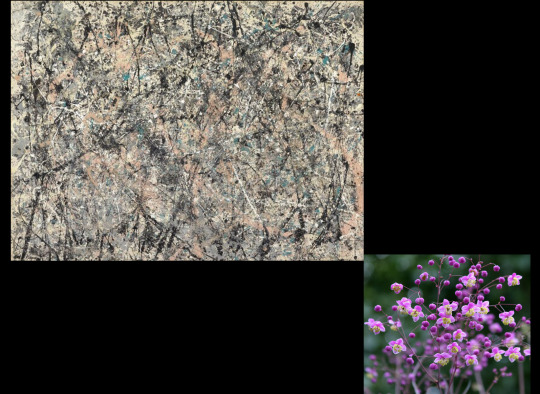
5) That, in 1961, Chryssa took up the challenge presented by an alloverism that was derided by the male art establishment for being tied to decorative “women’s work.” And she did that by daring to bring her feminine alloverism into collision with the all-male culture of the American newspaper.
Chryssa always talked about her first encounter with the “vulgarity” of Times Square — then still the home of the New York Times — and about how it led to her artistic awakening. The landmark series of newspaper paintings that came out of that encounter show Chryssa proudly planting her flag — a cloth allover covered in patterns — in the midst of that distinctly masculine vulgarity.

27 notes
·
View notes
Text
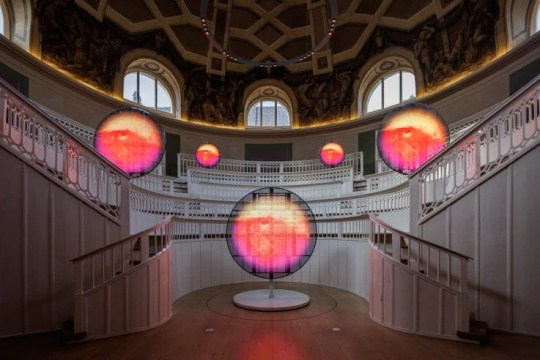
Rachel Rossin The Maw
44 notes
·
View notes
Text

Thomas Lerooy, Eye of the Storm, 2023
125 notes
·
View notes